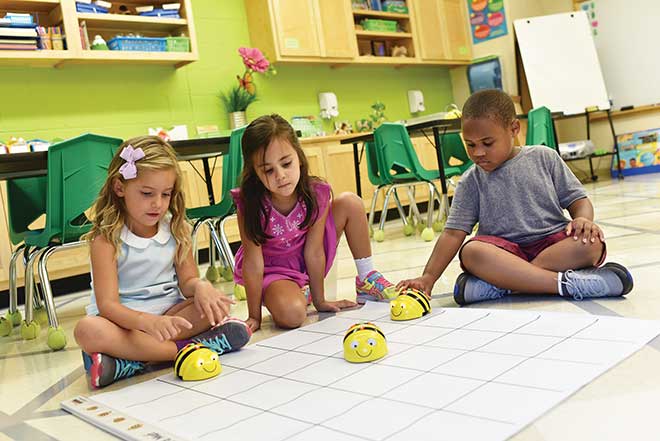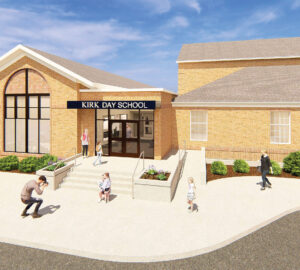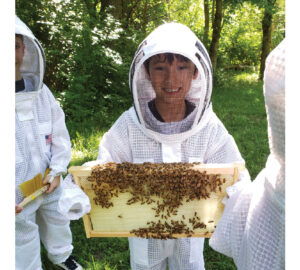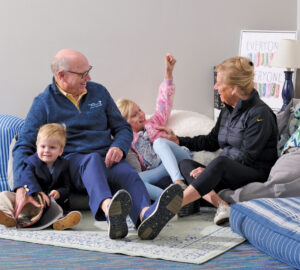The founding mothers of Community School wore Victorian blouses and long skirts, and—on the eve of The Vote—had a clear, strong vision. They knew what they wanted for the school that would educate their children. The 10 Guiding Principles they laid out in 1914 talked about differences and freedom, independence and “responsibility in global issues.” Principle No. 8 says: “The school should open a child’s eyes to the wonders of nature, the stars, the universe, the world around them.” At the time, the school was called Grace Church Kindergarten and housed in the basement of Grace Methodist Church at Skinker Boulevard and Waterman Avenue. Now, 102 years and three moves later, it sits on Lay Road just off Clayton Road amid 16 arcadian acres.
 “Our love of nature comes from deep within our wiring,” says head of school Bob Cooke when he explains the central role the outdoors plays in the daily curriculum. “We believe in incorporating it at every grade level.” While kindergarteners sift for tadpoles and examine frogs, older children take pond samples to chart seasonal changes in the water. Through the processes of evaporation and condensation, they make rain in plastic bags. On sixth-grade camping trips, students build fires and take moonlit walks; they lie in the grass to watch the movement of the heavens. “We rarely close for snow days,” says Cooke, “because snow offers its own unique opportunity for children to experience joy.”
“Our love of nature comes from deep within our wiring,” says head of school Bob Cooke when he explains the central role the outdoors plays in the daily curriculum. “We believe in incorporating it at every grade level.” While kindergarteners sift for tadpoles and examine frogs, older children take pond samples to chart seasonal changes in the water. Through the processes of evaporation and condensation, they make rain in plastic bags. On sixth-grade camping trips, students build fires and take moonlit walks; they lie in the grass to watch the movement of the heavens. “We rarely close for snow days,” says Cooke, “because snow offers its own unique opportunity for children to experience joy.”
But the school also is about inside. There’s a fireplace in the ‘community room,’ and, on dreary days, there might be a story around it. “We’re very thoughtful about what we do,” Cooke explains. “What do the children need to learn today, and what’s the best environment for them to do that in?”
Community School also prides itself on its STEAM program (Science, Technology, Engineering, Arts and Math). “We’ve been doing it for 100 years!” Cooke says. “Our woodshop is a great example of somewhere all these disciplines can come together. There’s engineering and math involved, but there also needs to be an artistic component because without it, the others can’t do what they should in societ y. Art is everywhere here!”
The school recently has taken students to new heights with a robotics curriculum that teaches children age 6 and up to program robot bees (and other more sophisticated robots). The class is given a pr oblem and has to solve it: H ow do we get a man-made insect to follow a path? And how do we light up its eyes?
Meanwhile, back outside, the study of real bees takes place. A butterfly garden, carved out of a corner of the campus and planted with birds and insects in mind, serves as a little, natural amphitheater, a place to watch pollinators at work. “The bees come, the hummingbirds come,” Cooke says. “It’s wondrous and very beautiful.”
Pictured: Students learn computer skills using ‘BeeBots.’
Photo: Jennifer Lin
By nurturing the gifts of mind, body and spirit, Community School fosters the growth of young children and encourages their development as the leaders of the next generation. Pictured on the cover: Bob Cooke and students explore the outdoors. For information, call 314.991.0005 or visit communityschool.com.
Cover design by Jon Fogel | Photo by Colin Miller of Strauss Peyton Photography








